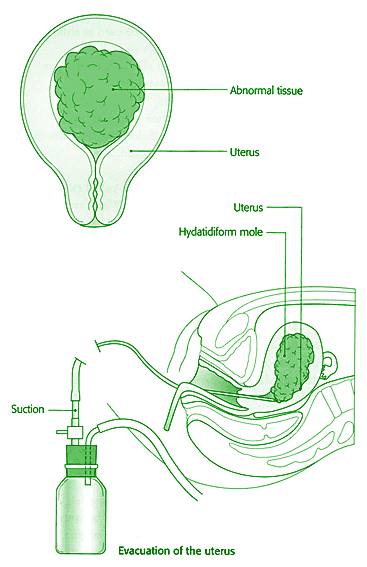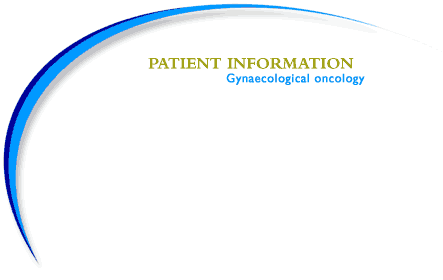|
GTD and evacuation of the uterus
• Gestational trophoblastic disease (GTD for short) describes a
range of conditions. At one end is the benign (non- cancerous) condition
known as hydatidiform mole. At the other end is malignant (cancerous)
choriocarcinoma. GTD is related to pregnancy, and occurs when the tissue
that forms the placenta develops abnormally.
• Hydatidiform moles may be described as 'partial' or complete',
depending on the tissue involved. Occasionally, a complete mole can
develop into a choriocarcinoma.
• The treatment for hydatidiform mole is evacuation of the uterus.
The pregnancy will not develop normally and must be removed to settle
bleeding and enable the uterus to return to normal. Evacuation is carried
out using a suction device under general anaesthetic, and takes about
10-15 minutes. You will normally be able to go home the next day. The
diagnosis cannot be confirmed until the pathology result is known.
• After the operation, you will have regular urine tests to check
that your pregnancy hormones are returning to normal levels. Do not
take the contraceptive pill until this has happened, and wait for at
least another 6 months before becoming pregnant again.
• If you need further treatment, or if you have a choriocarcinoma,
you will be given chemotherapy, which is treatment with drugs that attack
the abnormal cells. Most women are still able to become pregnant after
chemotherapy. The risk of GTD occurring in the next pregnancy is increased,
but is still small (about 1 in 100).
|
|
 |




